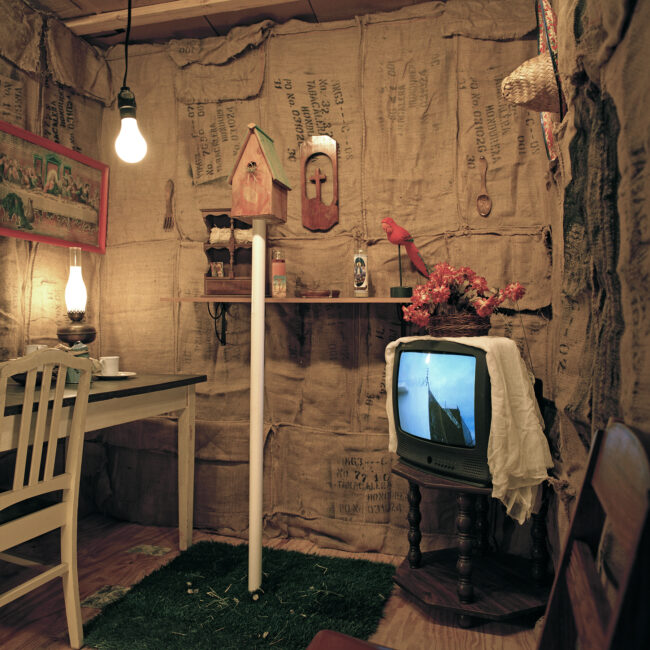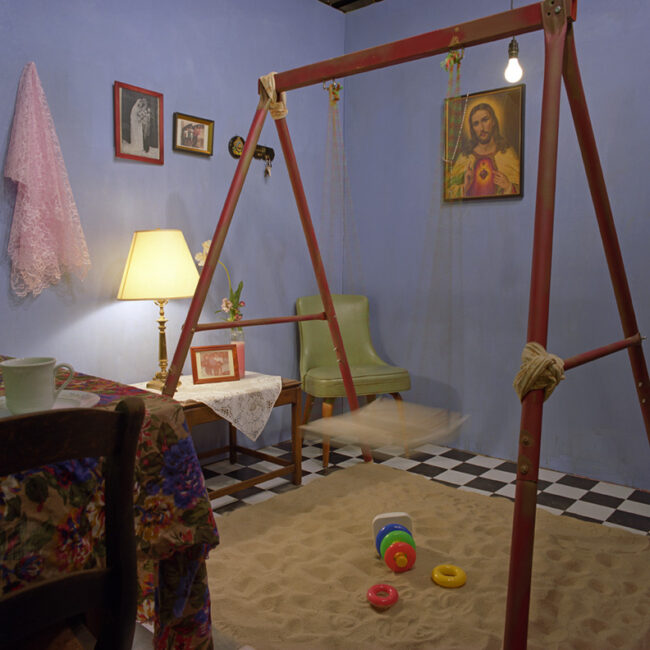Honduran-born multidisciplinary artist Alma Leiva received an MFA from Virginia Commonwealth University and a BFA from New World School of the Arts. She has exhibited her work in museums and galleries in the United States, Europe and Latin America. She has completed residencies such as the MacDowell Colony, Yaddo, and Southern Constellations.
Alma Leiva was selected for her work, “Celdas,” exploring the immigrant experience through a nuanced lens. She constructed ephemeral settings with makeshift structures, developed over a period of 3 to 5 weeks each, and incorporated photos of victims of violence, crime-scene elements, newspapers, and various found materials. “In some of the works, I make references to the globalization of the American Dream with elements such as the Coca-Cola sign” the artist comments. “Coffee-stained materials allude to the cultural term, ‘cafetear,’ or drinking coffee over the dead.”
Through a diasporic, semi-autobiographical lens and from the subtext of U.S. policy in central America, “Celdas” addresses the experience of fear, displacement and isolation Hondurans experience due to the unspeakable violence that has taken over most of the region. “Current inhumane anti-immigrant policies and political rhetoric aiming to dehumanize central Americans in the United States, contribute to the perpetuation of the trauma on vulnerable immigrant communities and asylum seekers at the U.S. border.”
Leiva constructs the tableaux in various locations across the United States, then photographs it as documentation. “The nomadic process of this work helps me more effectively convey the psychological trauma.” The artist emphasizes the tension between cultural assimilation and the persistence of cultural identity and memory. “The presence of specific objects such as American pop music CDs, flowers or candles, solicit an intimacy with the most private aspects of the lived experience. By bringing natural elements such as leaves, sand or found materials from the area into the structures, I recall the individual’s capacity to make-do and allude to the experiences of the working class.”







